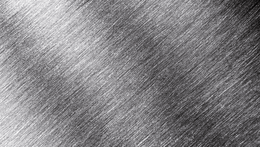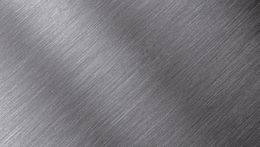
Satinising, Satin finishing
Satin finishing of metal is about creating decorative surfaces from matte to matte-glossy.
Satin Finishing (Metal)
In contrast to polishing, satin finishing of metal is a one-step process. However, the result, referred to as the degree of finish, can be quite different. The so-called "brush stroke" on the metal, which creates the decorative surface finish, can range from coarse to fine to ultra fine.
The brush stroke is achieved by working the metal with satin finishing tools made of abrasive fleece, such as a satin finishing ring. Unlike polishing, no polishing compounds are used for satin finishing.
Metal can be satin finished with hand-held power tools such as a drill or an adjustable angle grinder. But satin finishing is also done in industrial processes with stationary machines or polishing machines.
Matt or satin surfaces are considered particularly elegant and decorative. It is not surprising that the jewellery and luxury goods industries in particular like to use this method of surface finishing.
Abrasive Non-wovens
Abrasive non woven material is used for satin finishing tools. It consists of tangled nylon and/or polyester web with various types of abrasive grit particles resin-bonded to the fibres.
The material has an open and flexible structure. As it wears, new abrasive grit is exposed to create a uniform and consistent finish whether on a flat or slightly profiled surface. Abrasive grit particles are usually silicon carbide or aluminium oxide. The material can be used in both wet and dry operations.
Depending on the hardness of the abrasive grit particles, the workpiece to be machined can have a surface structure ranging from coarse to ultra fine.



Example of a surface structure from coarse to fine.